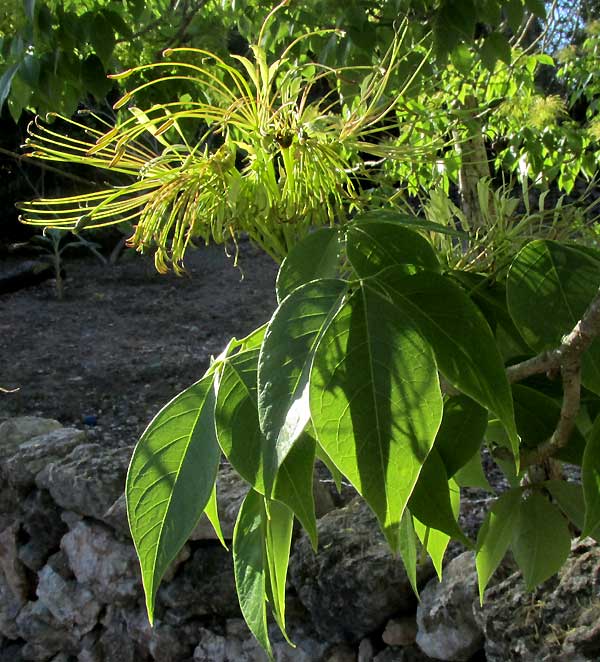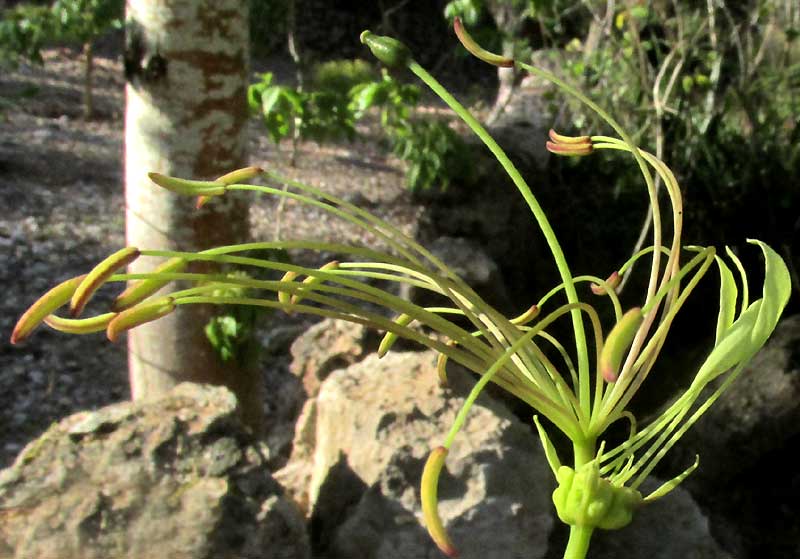Excerpts from Jim Conrad's
Naturalist Newsletter
Issued on March 19, 2020, from the forest just west of Tepakán; elev. ~9m (~30 ft), N21.053°, W89.052°; north-central Yucatán state, MÉXICO
CRATEVA TREE
In Tepakán, here in the heart of the dry season when many things are dried-out and brown, a certain smallish tree in a somewhat abandoned lot surprised me with its branches heavy with lush new leaves, and abundant greenish flowers of a type I'd not seen. They're shown below:

A glance at the flowers suggested the family, as you can see below:

The most distinctive feature is the long, curved stalk, or "gynophore," arising from the blossom's center, atop which stands a small, dark green, egg-shaped ovary, the future fruit. Seeing that, I thought "Caper Family, Capparaceae," because flowers of the commonly occurring weed here called the African Spiderflower sets its ovary on a long gynophore just like that. In fact, just as with the African Spiderflower, our tree's blossoms are similarly structured with several stamens joining at their bases to form a tube around the gynophore's base, and the blossom's four long-stalked petals all gather on one side. Also, African Spiderflower produces digitately compound leaves -- like Buckyeye and Horsechestnut trees -- just like our tree, which bears leaves with three leaflets arising from one point atop the petiole, as shown below:

So, the tree belongs to the Caper Family. This is a small family with few species in the Yucatan, so it was easy to determine that here we have CRATEVA TAPIA. The species bears no good English name that I can find, so I call it Crateva Tree.
Crateva Trees occur from lowland southern and central Mexico through the American tropics to the Amazon in South America. The species is considered to be a natural constituent of the Yucatan Peninsula's dry forests, but I can't say whether the tree in Tepakán is growing there wild or has been planted as an ornamental. I've not noticed one in the forest here so probably this one was planted.
Crateva Tree is well known worldwide not only as a handsome ornamental able to endure drought and heat, but also for its traditional use medicinally. A 2013 research paper by Priyanka Sharma and others in India, where it's called "Varuna," calls the species one of the important drugs of Ayurveda, "commonly applied to regulate equilibrium among Vata, Pitta and Kapha in Ayurvedic system." Parts used include Root bark, stem bark, leaves and fruits. The list of traditional uses is very long. Lab evidence has found it useful in controlling symptoms of urinary tract infections.